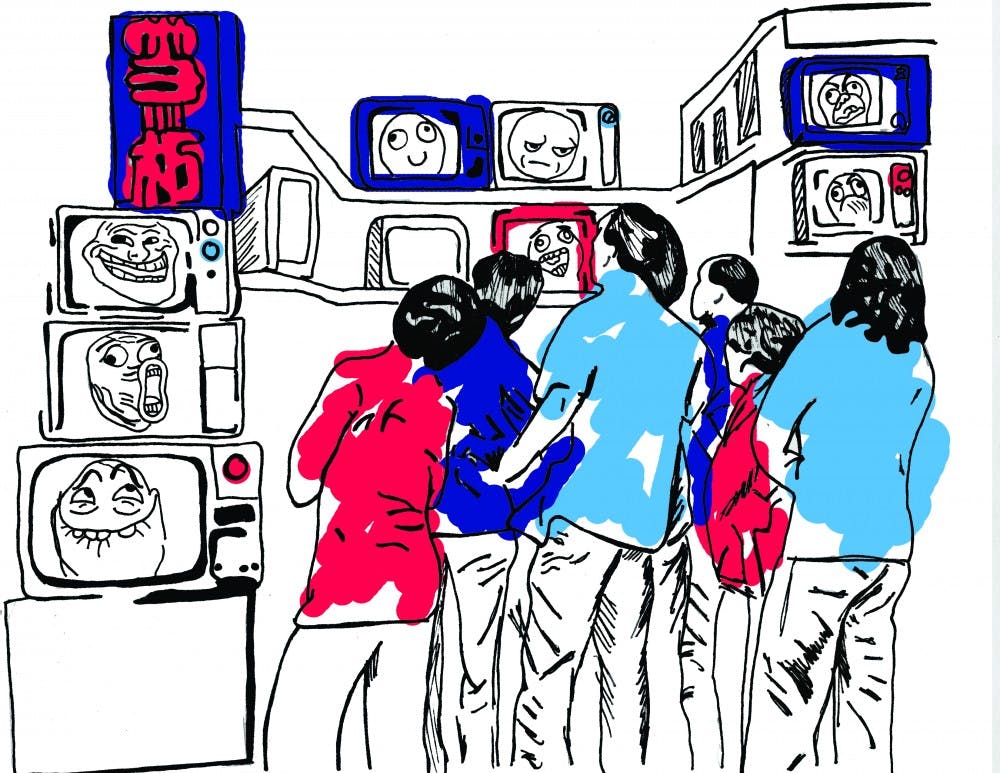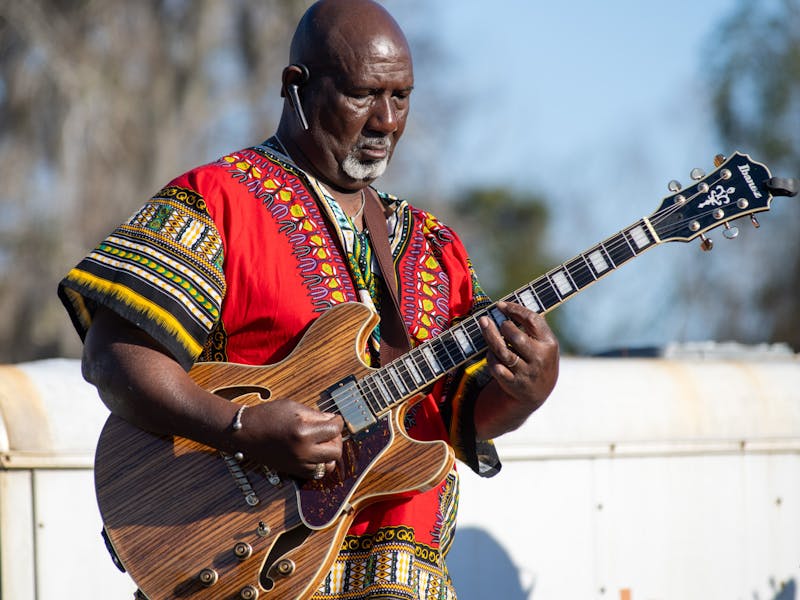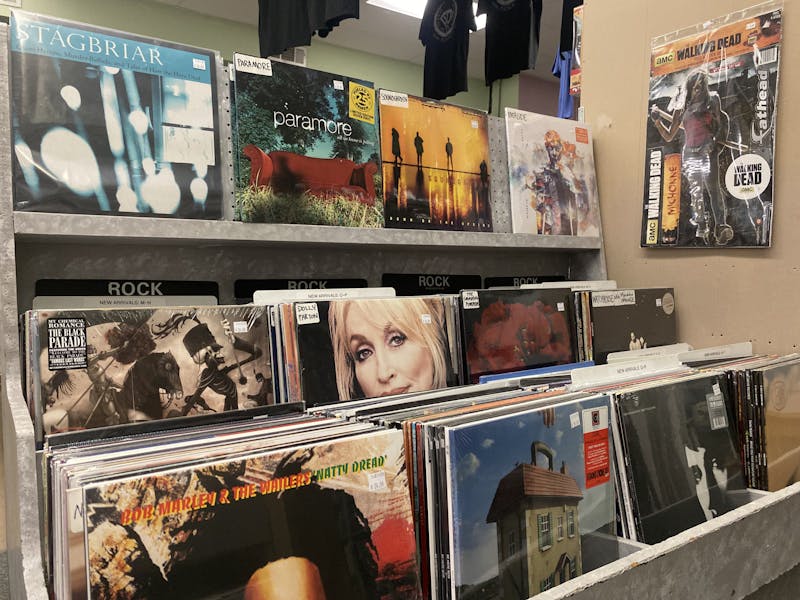The late Edward Sapir once said that language is “the most massive and inclusive art we know.” You’ve probably never heard of Sapir, but the German-born Columbia University graduate was best known for his theory which, simply put, states that language and culture are inseparably linked. Sapir died in 1939, but his theories were revolutionary for their time, as they placed language and culture into a comparative dialogue, something that had never been considered before, especially in regard to more primitive languages.
Fast forward to 2016 and the formality of Sapir’s theory becomes more difficult to apply to the uncorked torrent of memes and internet language that pour out from Reddit, Tumblr and Twitter. For those living under a rock, figurative or actual, a meme is an image, video or phrase that is spread via the internet with the sole purpose of spreading. These images are often altered as they pass through users. Those images of a ponderous Velociraptor that your high school friends won’t stop sharing on Facebook? Those are memes. That video of the tail-wagging corgi that your mom thinks is absolutely hilarious? Meme. That image of grumpy cat with a mildly offensive political statement in block text that your uncle shared? Upsetting, but still a meme.
Any visual item that is perpetuated by online users to a great extent can be considered a meme. This definition is important to remember because memes have penetrated so far into our daily conversations and interactions that they’ve begun to teeter on this fence between resilient trend and actual language.
“In terms of how linguists tend to think about language, a meme, much like other forms of spoken language, is a way of representing the world in some way,” says Elaine Chun, an associate English professor at USC. Chun has a bachelor’s degree in linguistics from Stanford and a Ph.D. in the same field from UT Austin, and she agrees that while memes may have characteristics of language, as it stands they are not one in themselves.
“They often have linguistic properties like words on them,” Chun says. “I do think that the way in which memes spread or are meant to spread is different because the point of a meme is to spread.”
And spread they have. It would seem that the contemporary idea of a meme began with the so-called rage comics that originated from the bowels of 4chan, an image posting forum. These crudely illustrated stick figures and faces became reactionary responses to whatever users felt appropriate to use them for. We’ve moved to a much more colloquial use of memes since then. The Harambe trend set the internet ablaze. Hashtags and replies led to the deletion of the Cincinnati Zoo’s Twitter account. The ubiquitous “D---- out for Harambe” made an appearance on countless banners draped from second story windows, and spoken references can still be heard in passing on campus.
If these elements exist so pervasively within our cultural context, surely they have an influence on the actual English we use. After all, language, including its grammar and context, is influenced by our daily lives. Traditions and habits are the vehicles for change, but while memes have certainly introduced us to a new way of communication, they’re not necessarily advanced enough to influence language.
“They definitely have some effect, but the effect I would say is lexical, meaning words,” Chun says. “Words get picked up, but it doesn’t change the grammar of the language or the rules.”
If these phenomena are not predisposed to change the language they’ve sprung from, where does their influence lie?
“I do see that on one hand it could have productive benefits,” Chun says on the subject of memes in political discourse. “More people are engaged because they think it’s interesting. On the other hand, there is a simplification of ideas because it’s boiled down to just a few words or a few images. It’s not like these memes actually explore ideas in complicated ways.”
She has a point. The 2016 election year has been called the “meme election” by countless publications. The Los Angeles Times, USA Today and New York magazine have all deemed memes as the language that’s inspired the most conversation about this quadrennial maelstrom.
Earlier in the primaries, memes played a surprisingly large role in inspiring attitudes toward candidates. Ted Cruz couldn’t escape the tidal wave of images pointing out his supposed likeness to the Zodiac Killer. Jeb Bush’s seemingly endless foolishness was only exacerbated by unfortunate moments caught on camera. “Please clap,” anyone? And Twitter never let him or other candidates forget these moments. Hillary Clinton’s cringeworthy pandering attempts will live in infamy thanks to memes. Seeing a prospective commander-in-chief whipping and nae naeing on daytime talk shows is painful in whatever light it’s painted.
This approach to political opinions is not new. The bulk of a voter’s opinion on a candidate largely stems from how the candidate is represented visually and how they come across in the press, so while these memes may be bringing political topics and images to a global audience, albeit with a side of humor, the behavior they inspire is nothing revolutionary.
“Politics has always been a game of simplification,” says Doug Fisher, a journalism professor who specializes in reporting and new media. “Politics and campaigning is in many ways a game of reductionism. How do you take very complex issues and boil them down to something that, for better or worse, or good or ill, can be transmitted to a large group of people?”
The work that memes do actually has historic parallels. Fisher described them as the modern day editorial cartoon.
“I think the reason these images as well as the editorial cartoon became so popular was because of the semiotics involved,” says Fisher. “Symbols are much more powerful, and they say so much more. Memes basically embody that idea.”
In this sense, memes have presented themselves as a viable medium for text and imagery, so if they have no place in our lexicon, maybe their properties are well suited to storytelling and information sharing.
“They’ve become part of the words that we use in online discourse. I don’t think I’ve seen a journalist utilize them as mainstream storytelling, but maybe that’s something they should begin looking into,” Fisher says. “In editing (class) now, I have teams each week do a Storify on all of that stuff. Some of them have embraced bringing in memes or GIFs. Maybe an organization decides that their online editorials are not going to be these ponderous columns, but these sorts of things. I think they have their place.”
But the power in memes comes from their origins as user-generated content. These are ideas and images for and by the people, so an attempt at commercialization might be thwarted by the very people being marketed to.
“It does seem like it could be a tool for anyone who wants to get their point across,” Chun says. “I can imagine that whether a politician or a company that’s trying to sell a product or anyone who wants to get their word out there could use it. The one risk with memes is that users can creatively subvert the original intention of the meme. They’re not always in the originator’s control.”
It might not be appropriate to call memes a trend. Yes, the shelf life for an individual image or element may be a few weeks at most, but this cultural shift seems to have truly taken hold of our technologically mediated society. For now, it’s evident that memes will not be changing our vernacular in any meaningful way. Until we all start conversing in text talk and acronyms, memes are solidly stuck as a cultural reference point: something to call on and say, “Did you see that? It was hilarious!” As for the future, it’s difficult to predict where this movement might go considering the volatility of the internet.
“I don’t see why it would end. It’s a particular genre. It could change,” Chun says. “Who knows, with technology and everything, there could be other ways to present these images.”
“Who knows, maybe we’ll start having virtual reality memes,” Fisher says with a laugh.




